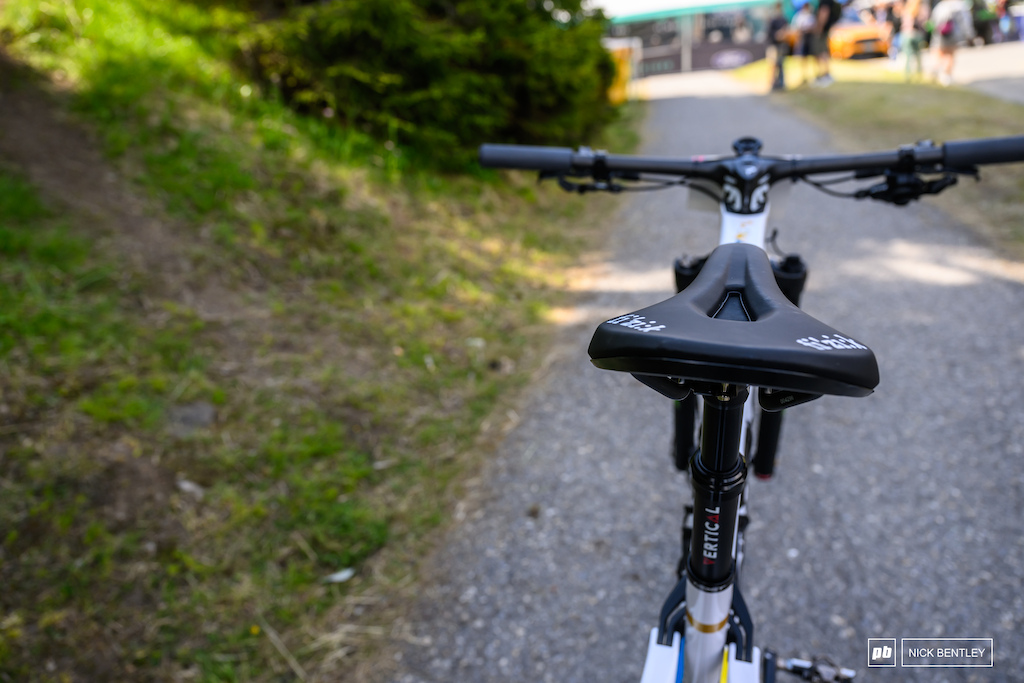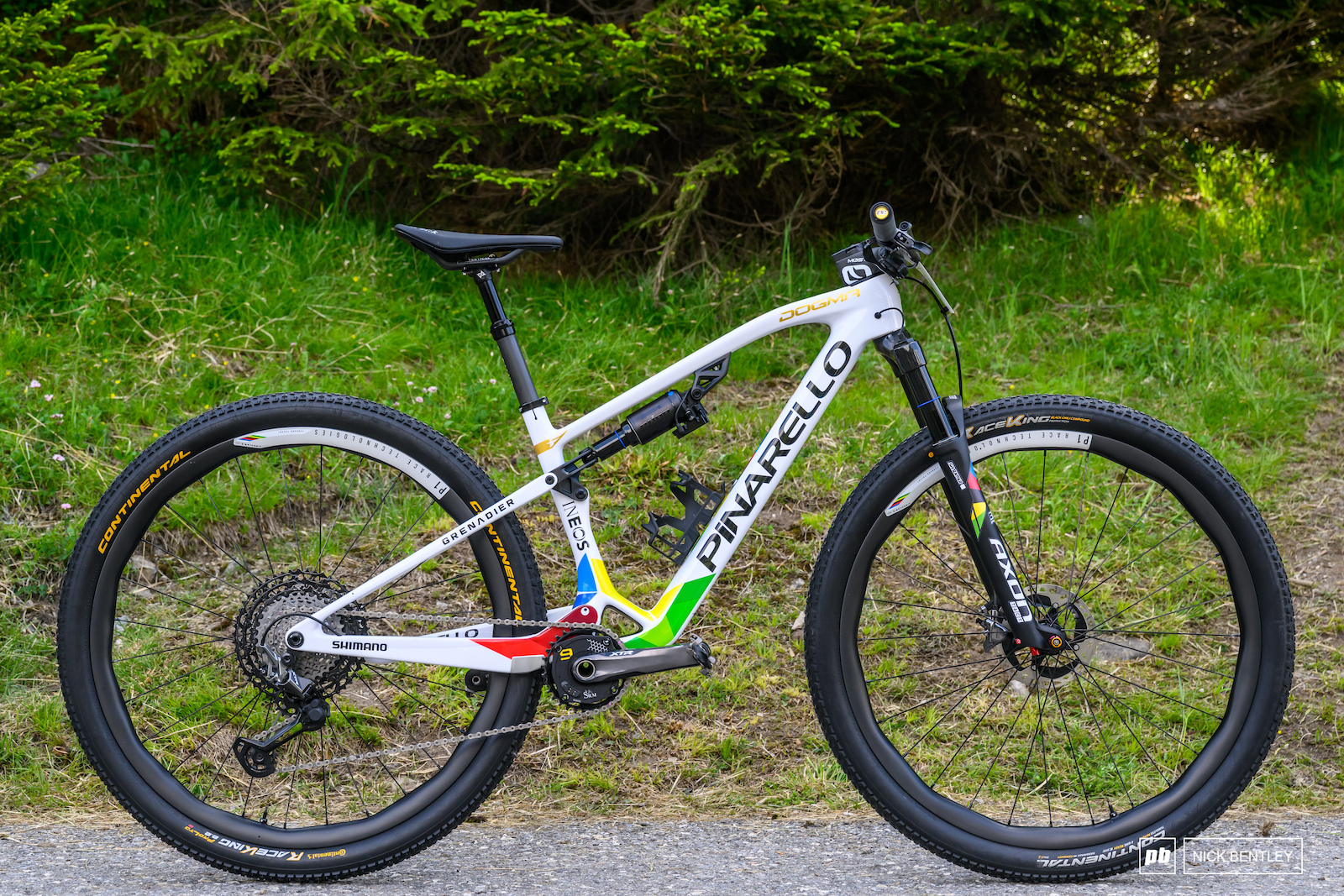The Dogma XC stands out for its impressive adjustability, allowing riders to modify suspension travel and geometry. Coupled with the SR Suntour Electronic TACT suspension system, it’s no wonder that Pauline feels comfortable and confident racing this pre-production bike at the highest level. The bike’s performance hasn’t hindered her either, as she achieved an impressive third place finish in the short track event in Lenzerheide and followed it up with a commendable fourth place in the XCO race. It’s evident that Pauline has quickly adapted to the new bike and is utilizing its capabilities to great effect.

Age: 31
Hometown: Reims, France
Height: 1.64m
Weight: 52Kg
Instagram: @paulineferrandprevot
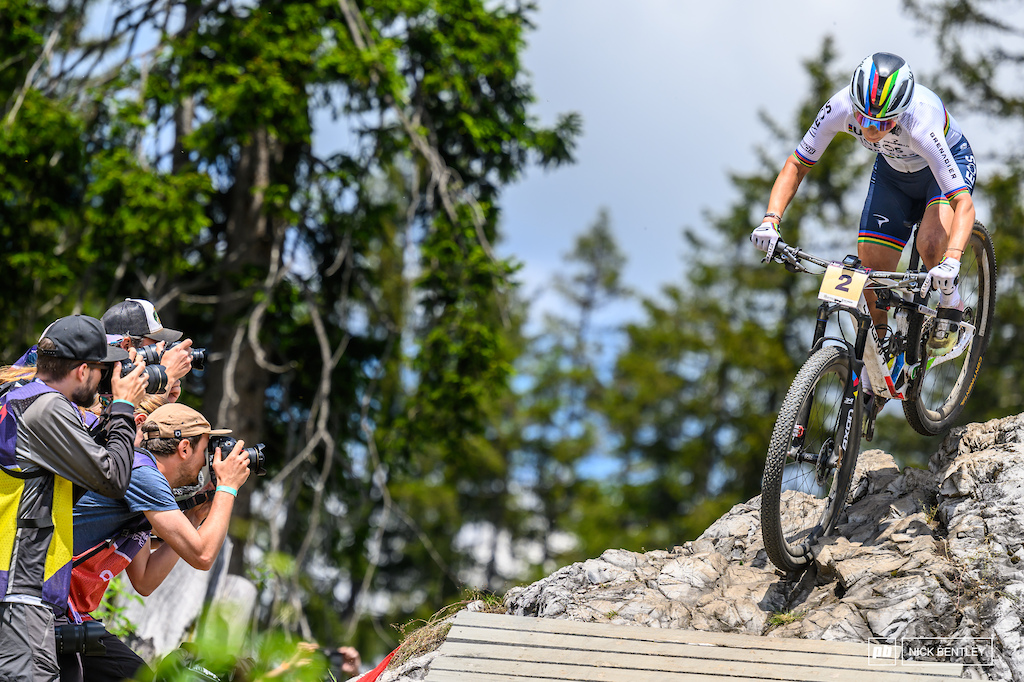
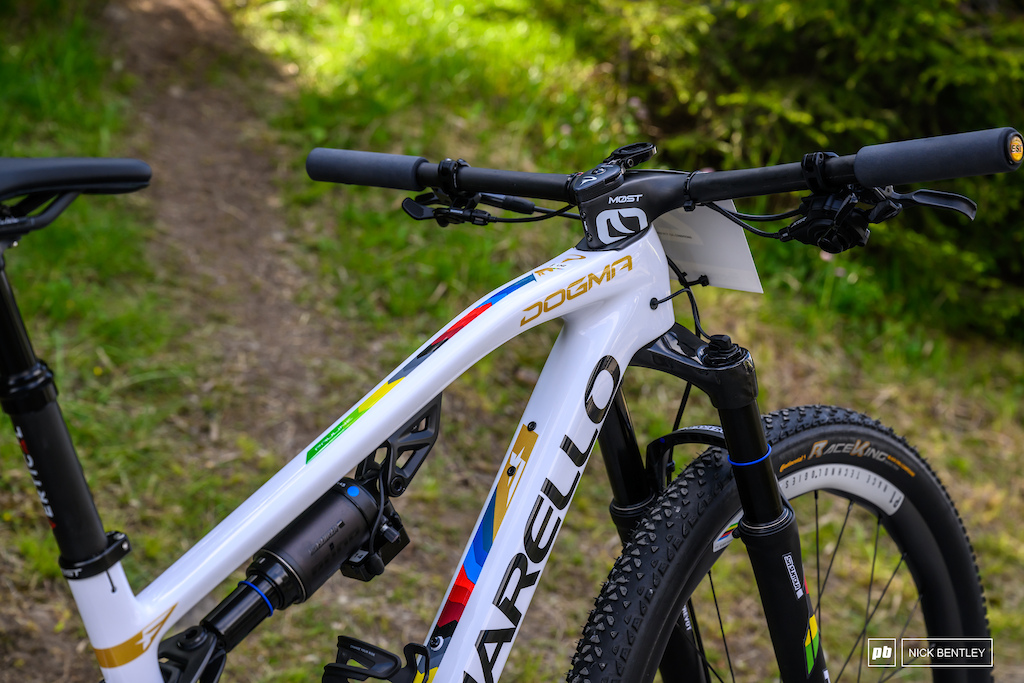
Frame: Pinarello Dogma XC
Shock: SR Suntour edge
Fork: SR Suntour 34 Axon
Wheels: P1 Race Technologies Singularis M30 29″
Tires: Continental Race King 29″
Drivetrain: Shimano XTR
Brakes: Shimano XTR
Cockpit: Most carbon handlebar
Weight: 10 kg / 22 lb

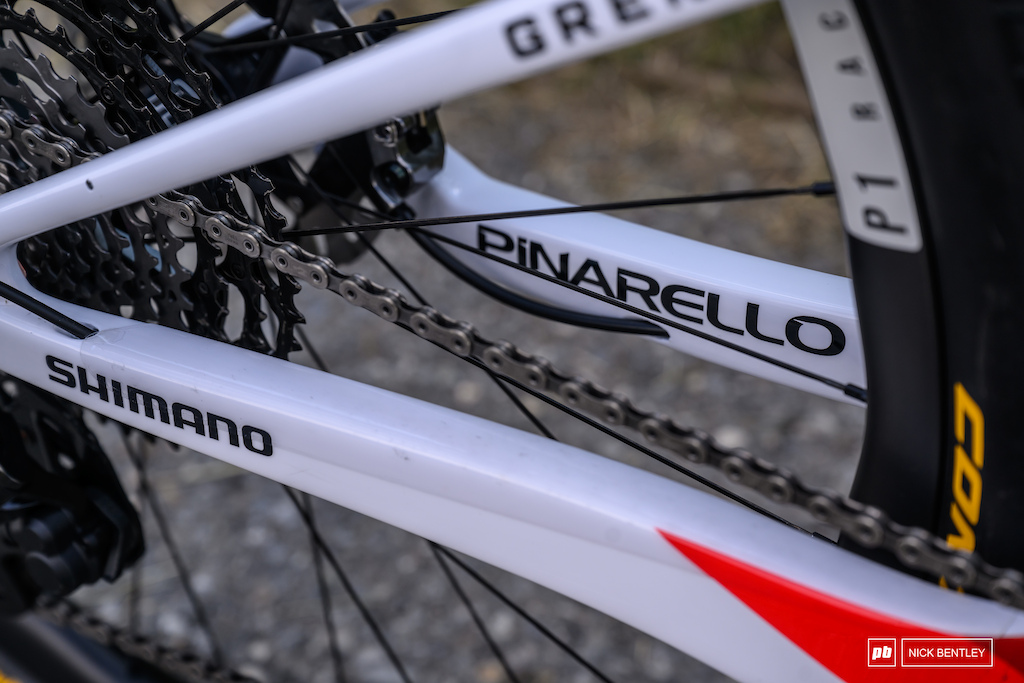

The rear triangle of the Dogma XC employs a patented asymmetric design, specifically reinforced on the left-hand side. This asymmetrical construction serves to counterbalance the higher forces generated on the opposite side of the drivetrain. The purpose of this design approach is to optimize the bike’s performance by ensuring efficient power transfer to the rear wheel, especially during intense pedalling and acceleration. The reinforced left-hand side of the rear triangle helps maintain stability and control while the bike is under load.
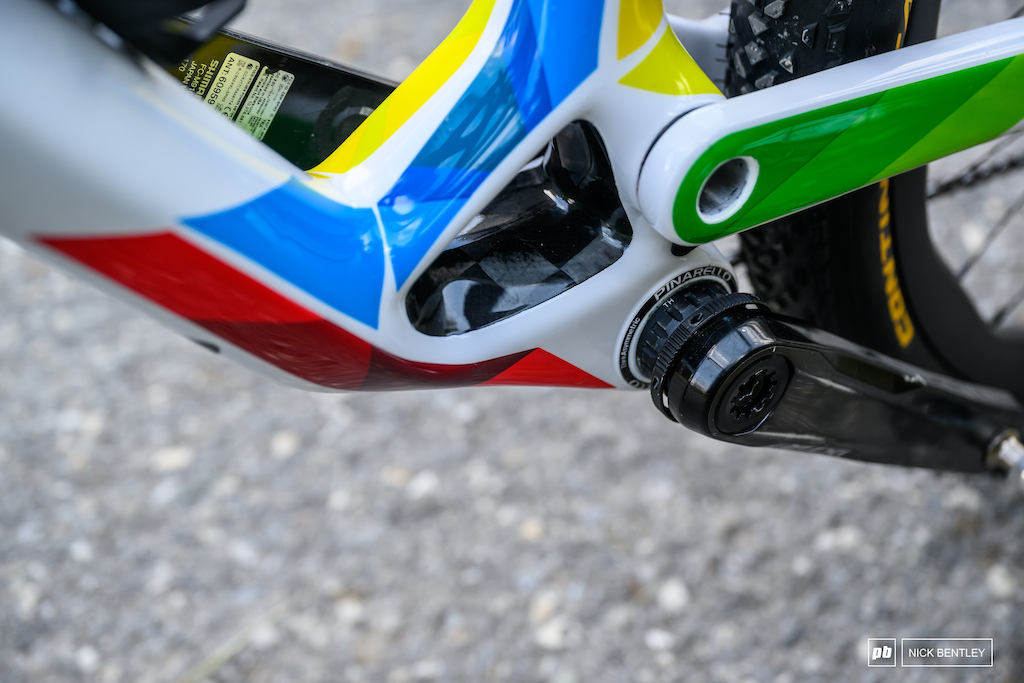
Along with the rear flex stays, there is also a unique hole just above the bottom bracket. This, Pinarello says, is to improve stiffness and accommodate a larger bearing for the lower pivot of the rear triangle.

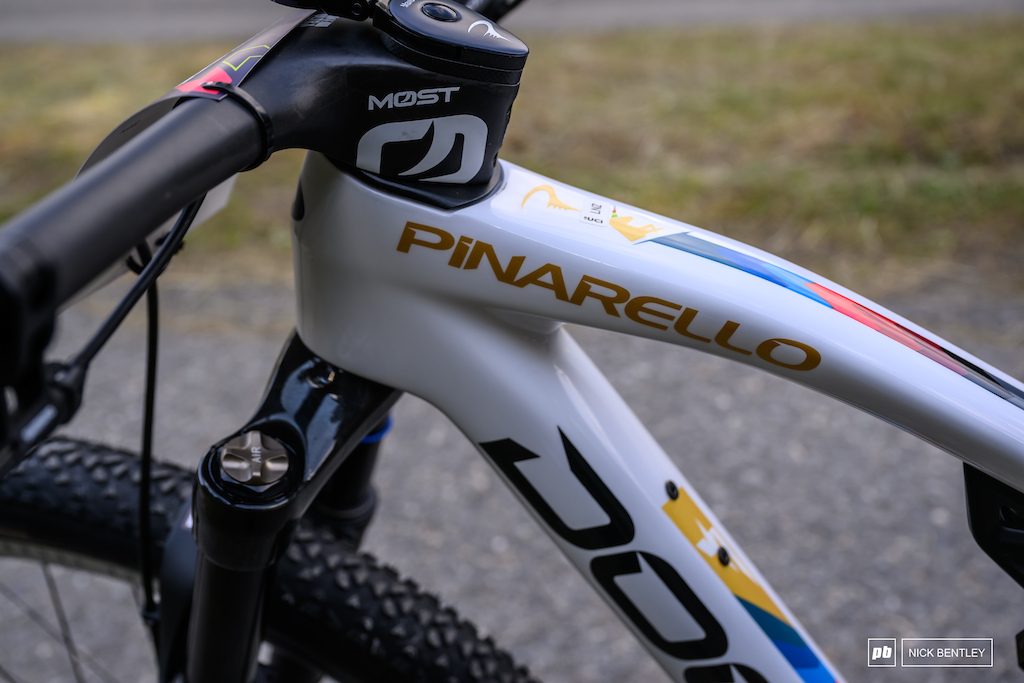
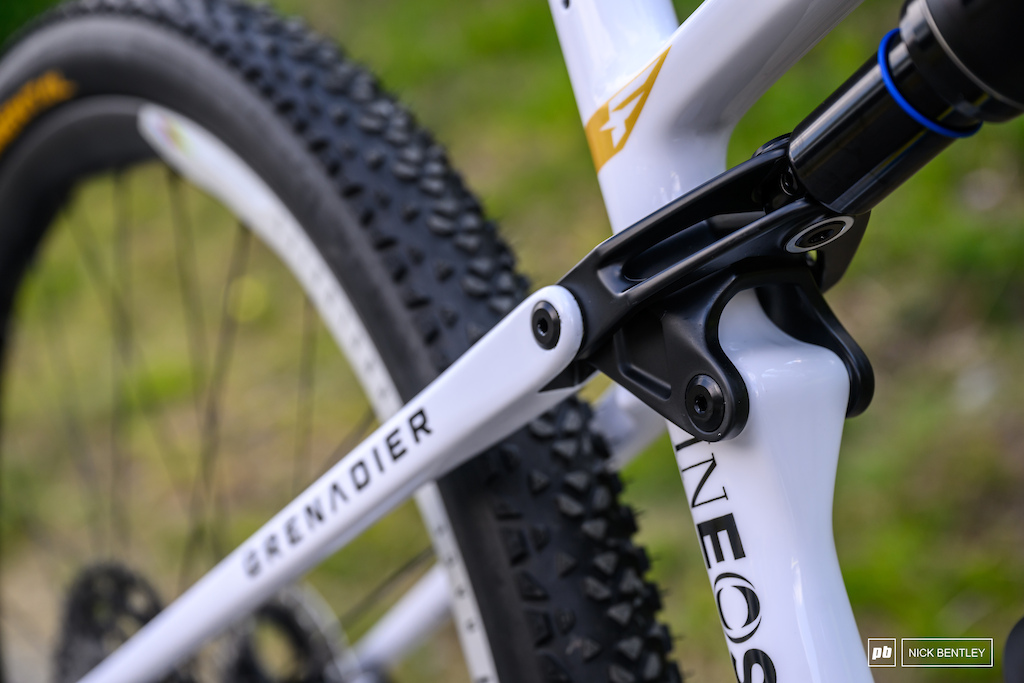
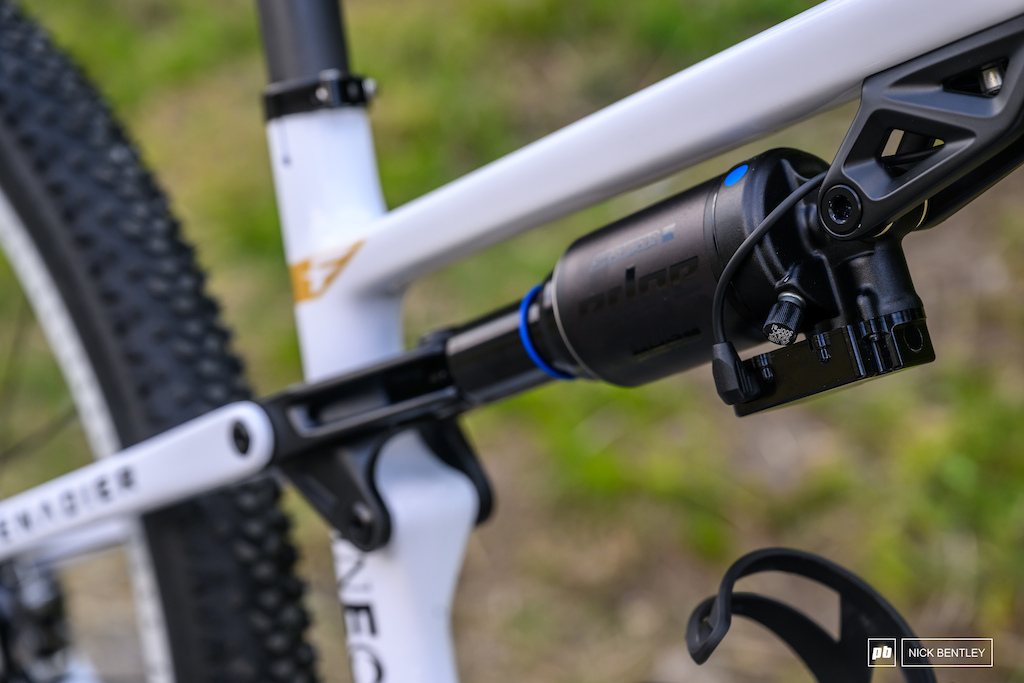
Pauline utilizes SR Suntour’s cutting-edge electronic suspension for both the front and rear of her bike. The rear shock she uses is the Edge Plus TACT shock, complemented by the Axon 34 Werx TACT fork. Both components are controlled by SR Suntour’s electronic damping control system. Unlike traditional setups, there are no controls on the handlebar as this is a fully automated system. Additionally, the bike lacks external sensors, suggesting that all adjustments are performed within the fork and shock themselves.
Although the system is not yet available for public release, the SR Suntour team provided me with some details about it. The system continuously monitors the bike’s suspension through its CPU. Its purpose is to ensure that the suspension is precisely configured whenever necessary. In the case of an XCO race, this means approximately 200 suspension adjustments per lap, a remarkable feat facilitated by the electronic suspension system.


The TACT system’s adjustments depend on the forces experienced by the suspension at any given time. However, presets can be configured to govern the behaviour of the suspension. These presets allow you to modify the suspension’s responsiveness and openness based on the applied forces. Although the system is complex, it is reliable, and Pauline is content using it for World Cup races.
In the future, when this system becomes available to the general public, it is expected that it will be controlled through a smartphone app, enabling users to make their own adjustments. However, Pauline’s suspension currently possesses a unique set of settings tailored specifically to her and the race she is participating in.
For the short track race, the suspension is configured to maintain a high level of stiffness for as long as possible. It only fully opens when a significant force is detected, allowing it to absorb the impact and promptly return to its stiff setting. On the other hand, for the XCO race, the suspension is adjusted differently. It incorporates the ability to adapt based on whether the bike is climbing, sprinting on flat terrain, or descending. Pauline has set it to provide optimal grip on technical sections during climbs, while keeping it moderately firm. When riding on flat terrain and descents, the suspension remains as stiff as possible to maintain speed.

When it comes to the all-important air settings, there is 52.5 psi of air with 4 volume spacers in the Axon 34 Werx TACT fork. In the Edge Plus TACT shock, there is 57.5 psi and one volume spacer. Both are running with slower rebound than most XC riders but still pretty fast. There is less need for custom-tuned dampers in both the fork and shock here as the adjustments can be made via the TACT electronic system.
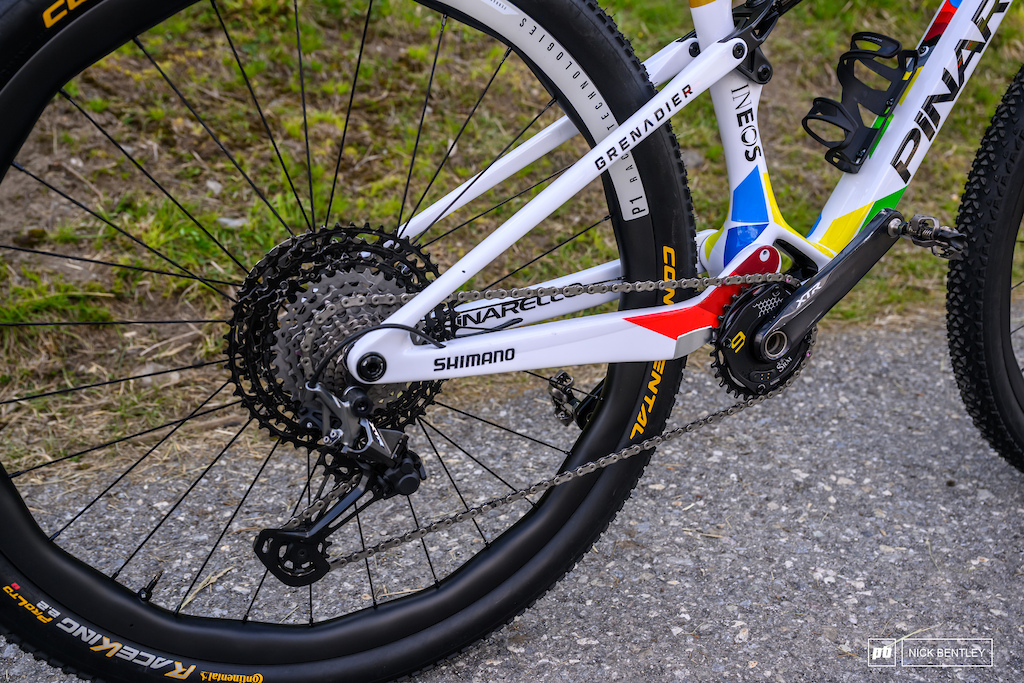
Pauline’s Dogma is equipped with a complete Shimano XTR cable-driven groupset. For this weekend’s race, Pauline has opted for a 34-tooth chainring, which is accompanied by an SRM powermeter.
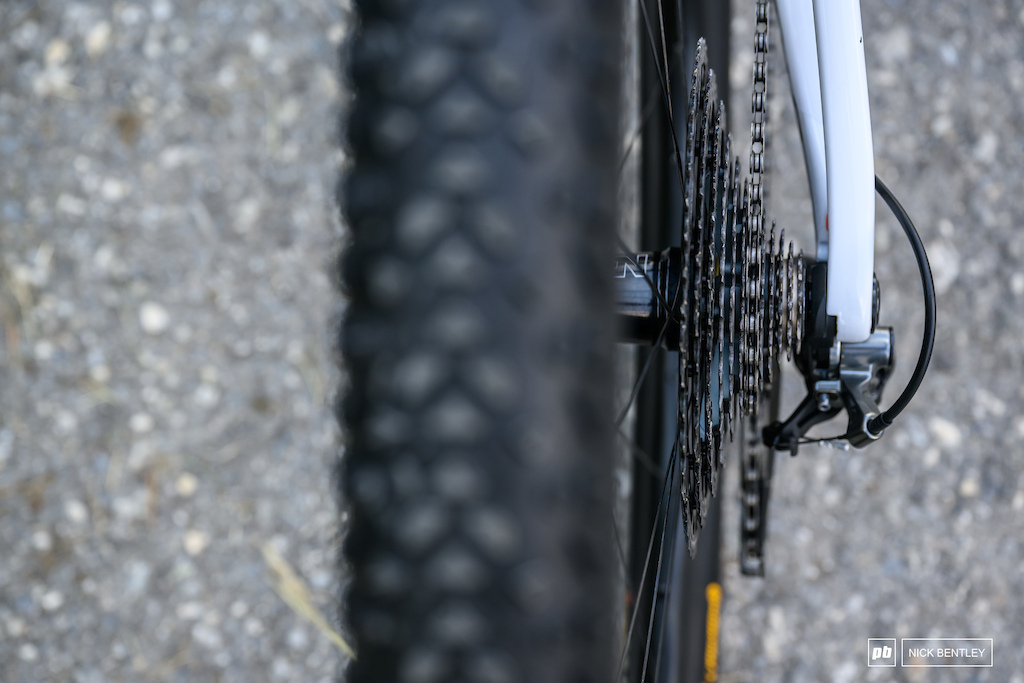
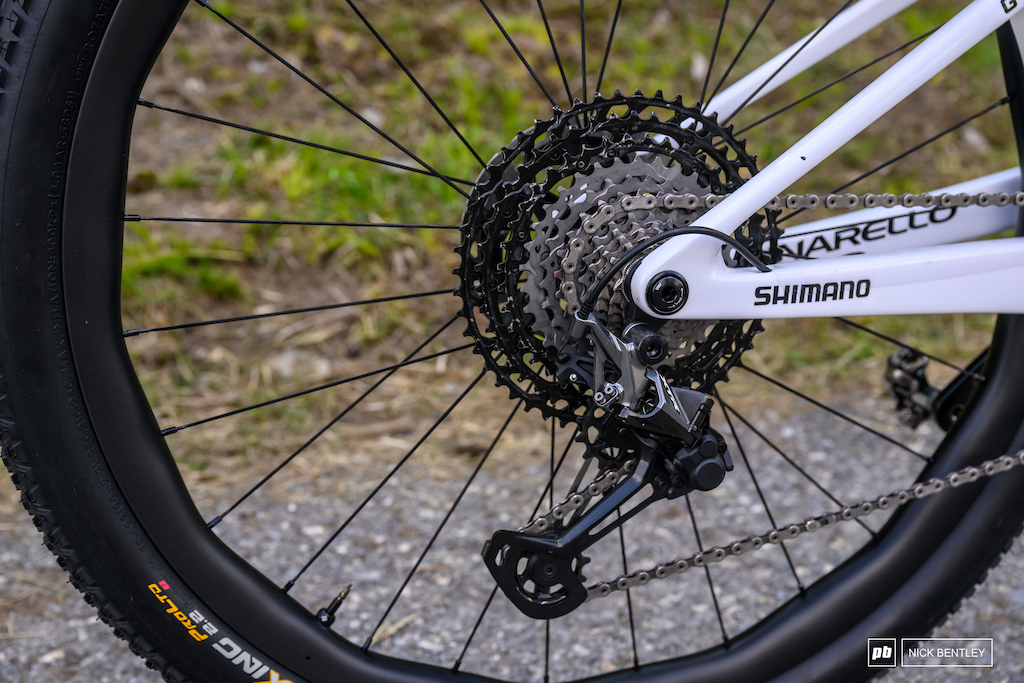
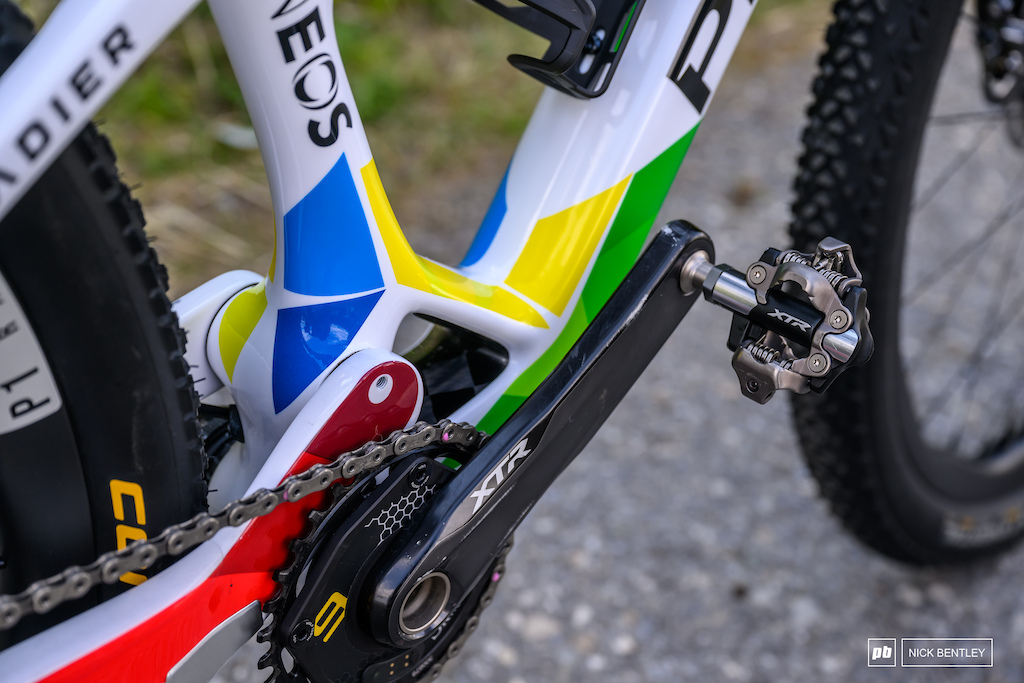
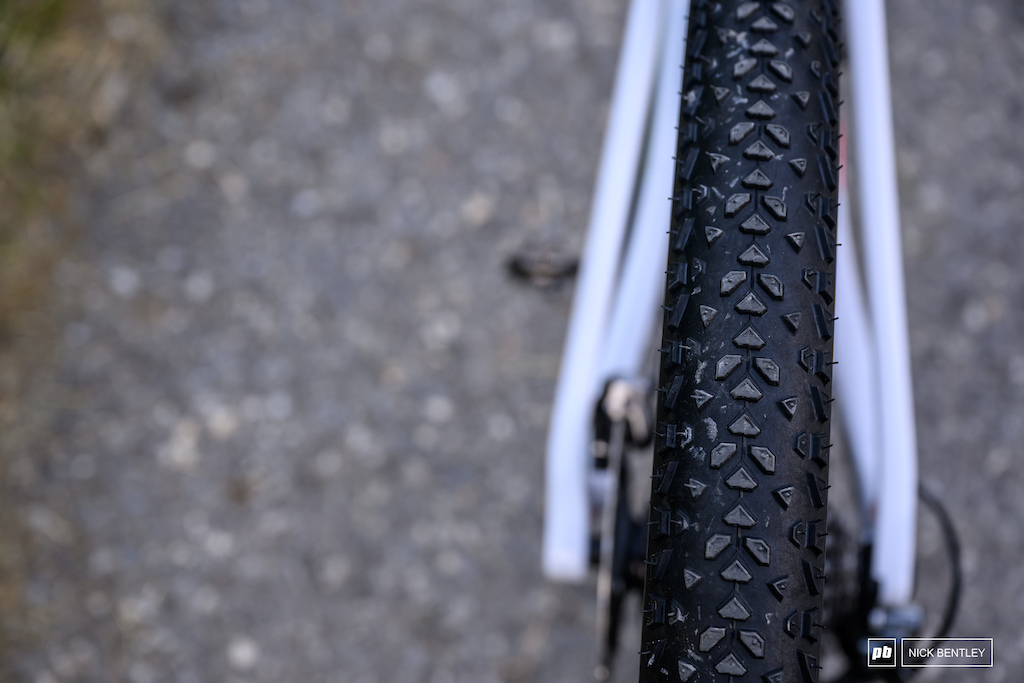
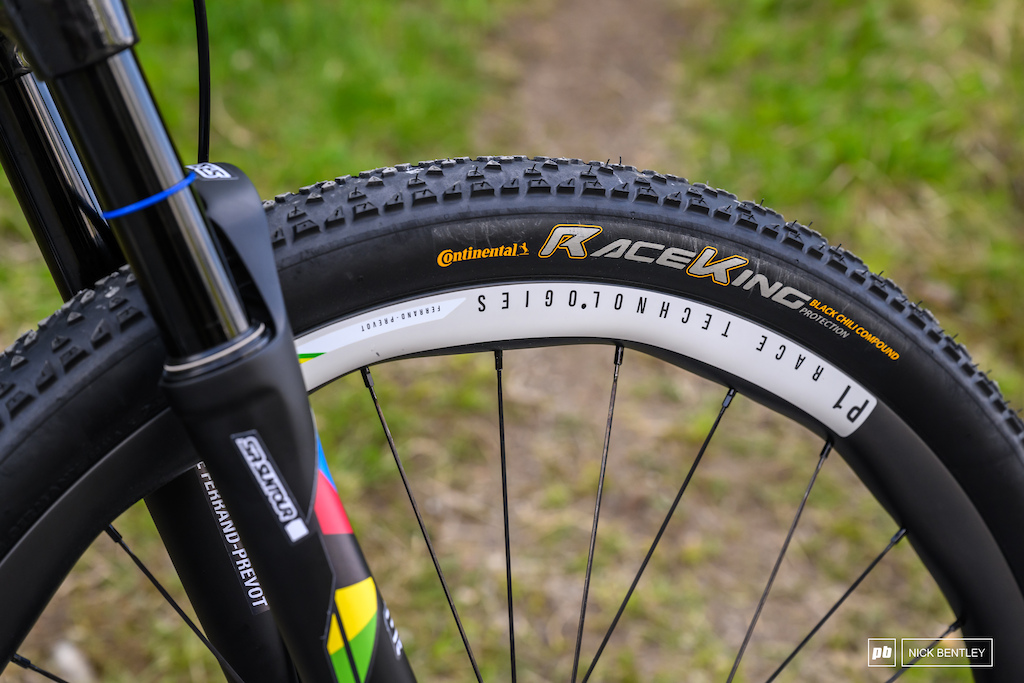
Pauline’s bike is equipped with a set of carbon P1 Race Technologies Singularis M30 29″ wheels, which are currently unreleased, making information about them quite scarce.
On these wheels, Pauline has chosen to mount Continental Race King tires. She is running both the front and rear tires at 18 psi, striking a balance between grip and rolling resistance for optimal performance.
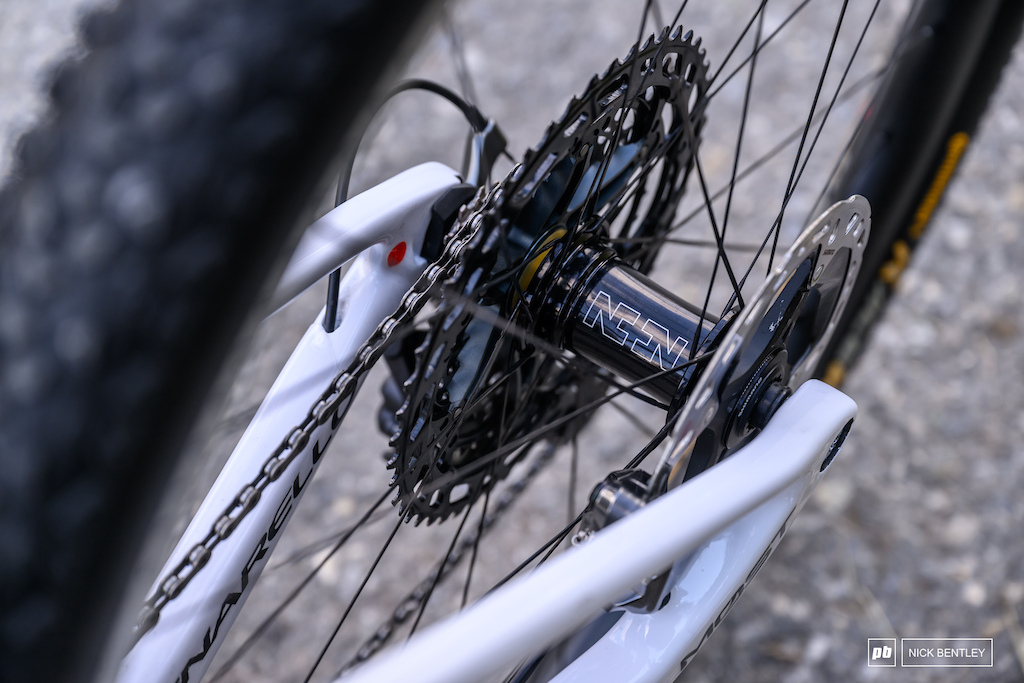

Pauline’s handlebars come from Pinarello’s in-house component brand, MOST. In fact it’s the MOST XC fully integrated cockpit which is custom-designed for the Dogma XC and offers precise control while reducing weight compared to a two-piece alternative. Alongside this, it has a fully integrated cable routing system ensuring a clean look to the front of the bike. The Dogma XC also incorporates a headset bearing with an internal stopper set at 60°. This stopper prevents the handlebar from over-twisting, safeguarding the frame from potential damage.
Pauline has her bars cut down to 720mm with foam ESI grips added along with a Shimano dropper remote and XTR brake levers with the XTR shifter mounted to the brake lever.
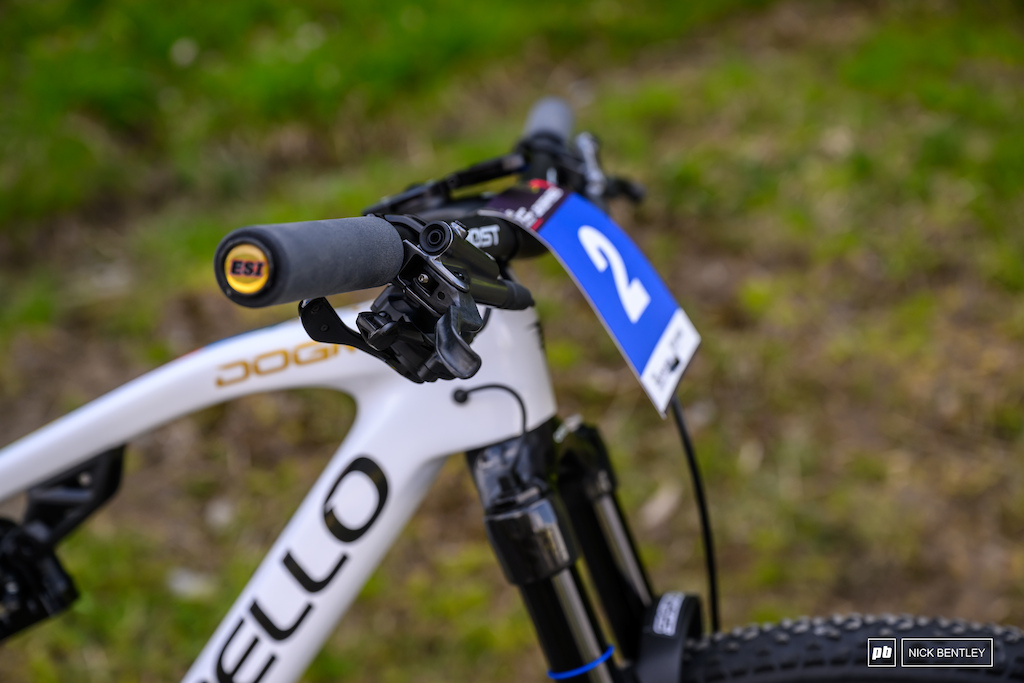
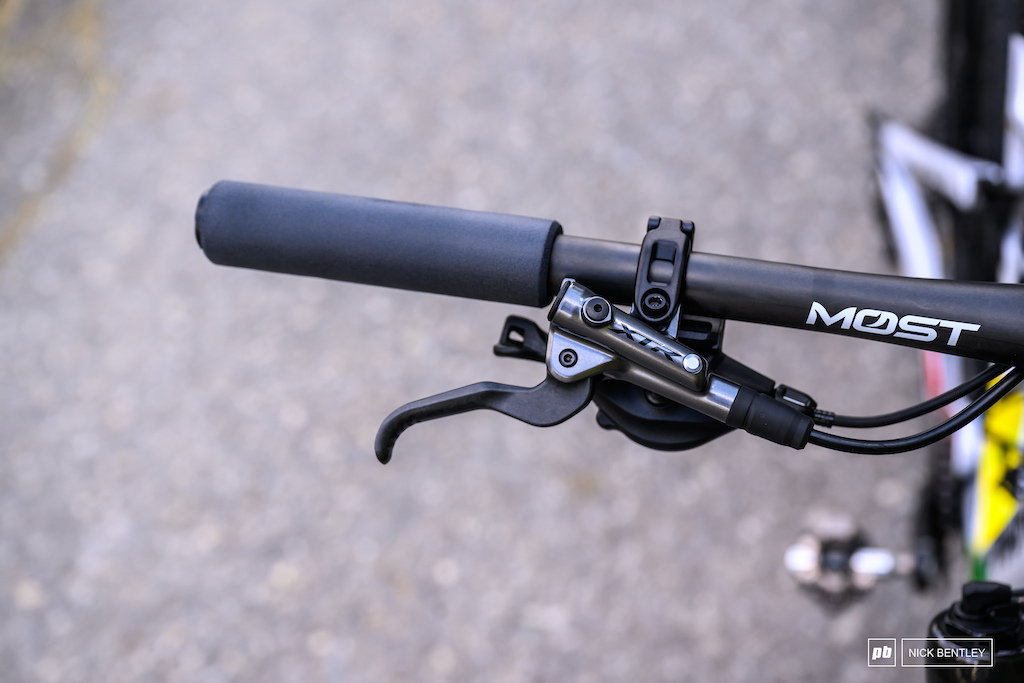
Pauline prefers to set her brake levers at an angle that aligns with the position of her hands and arms when she is seated on her bike. This ensures that her arm and hand are straight, a setup that she finds important and takes the time to ensure is correct before each race. By having the brake levers positioned in this way, Pauline can achieve optimal comfort and control while riding.
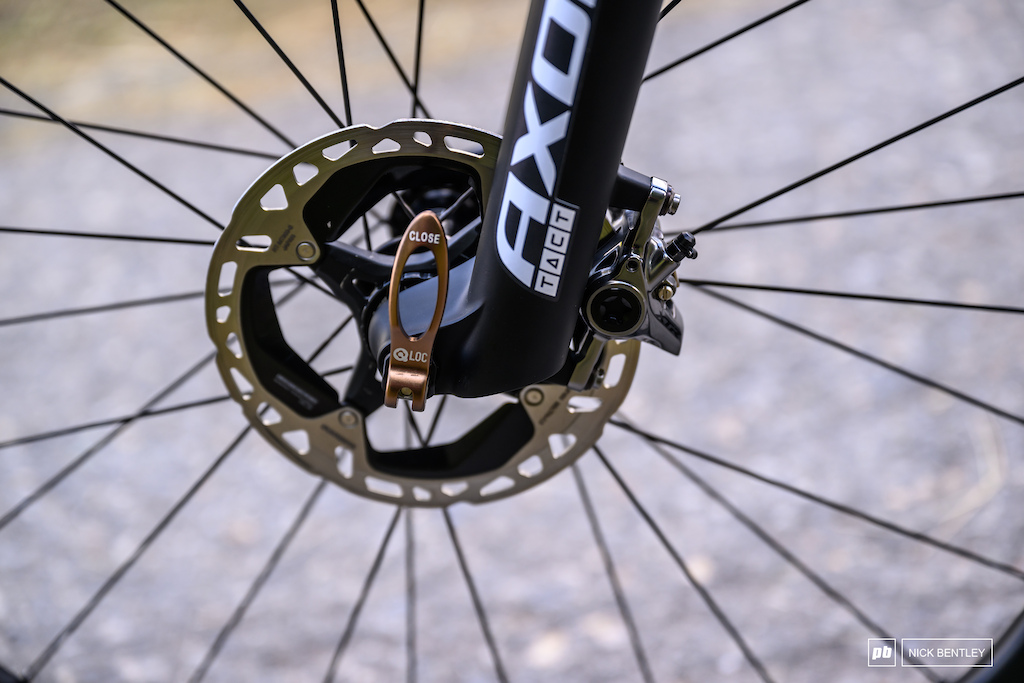
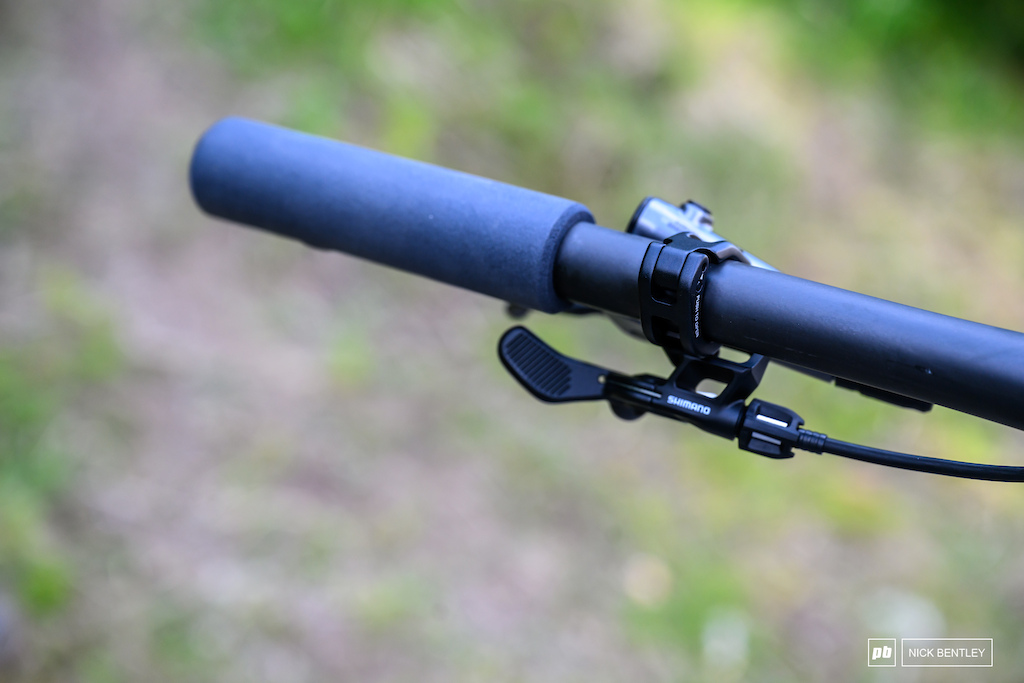
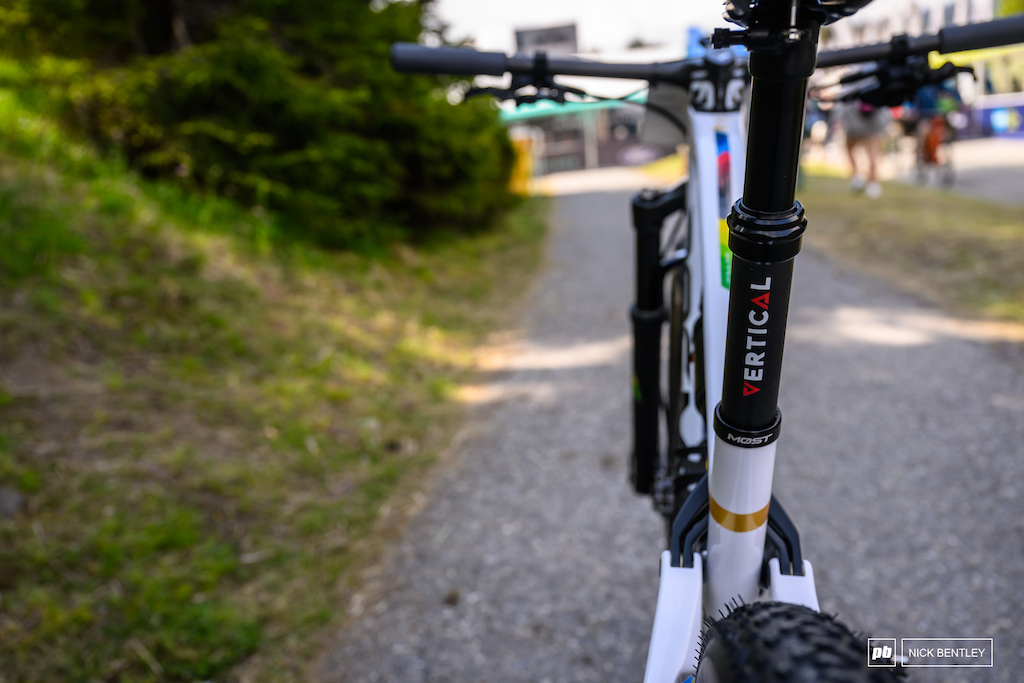
When it comes to dropper post Pauline has an light weight 322g Vertical helium dropper seat post with 60mm of travel.
